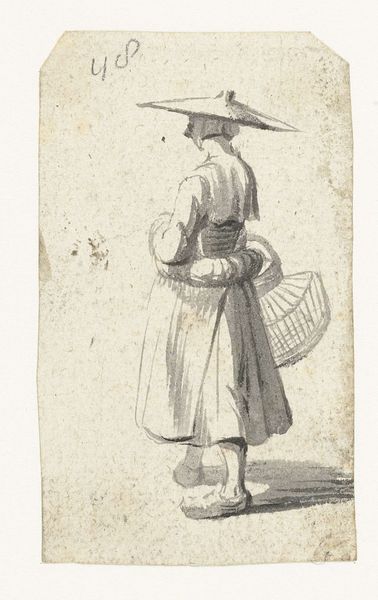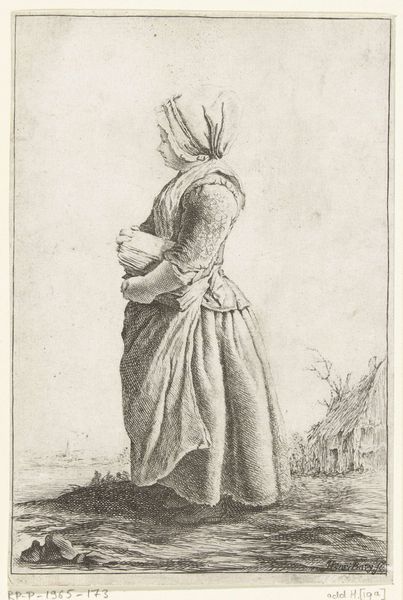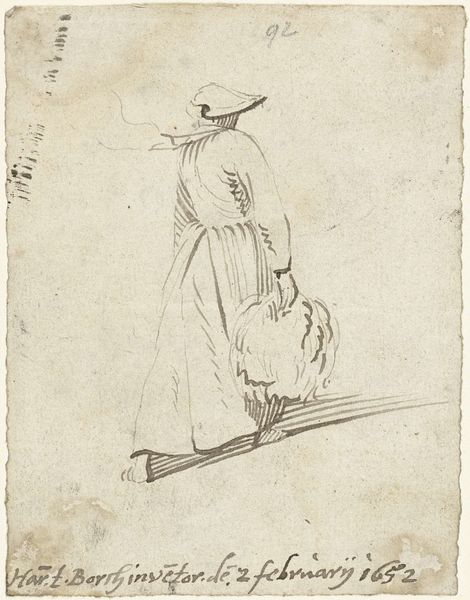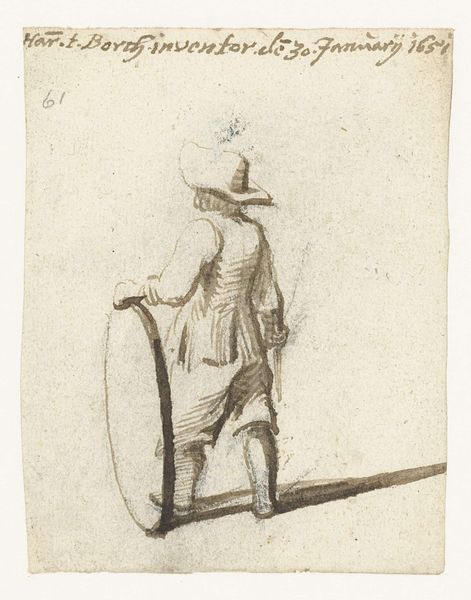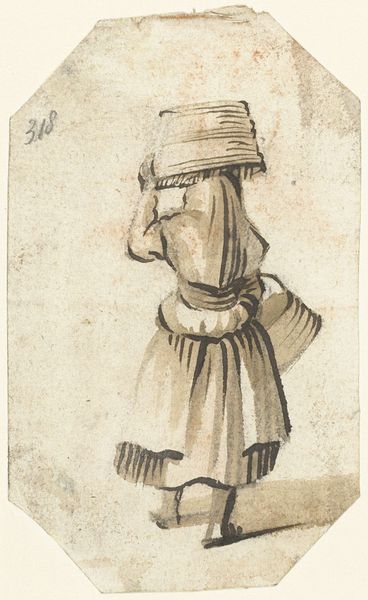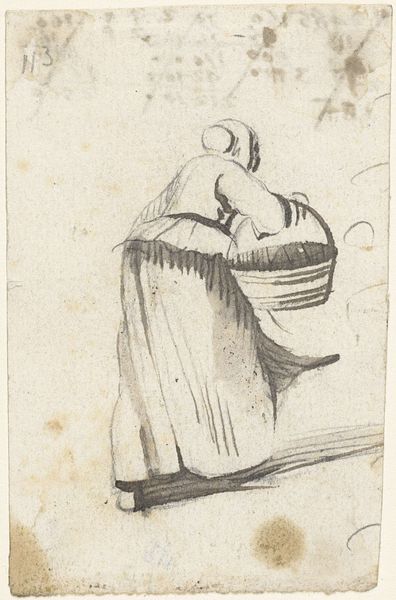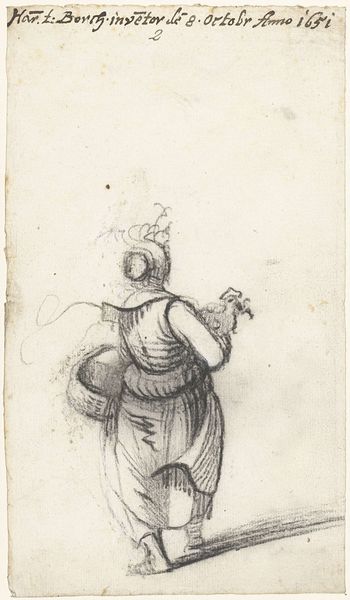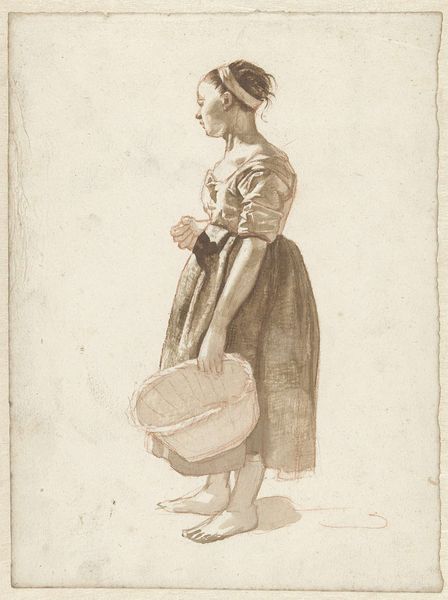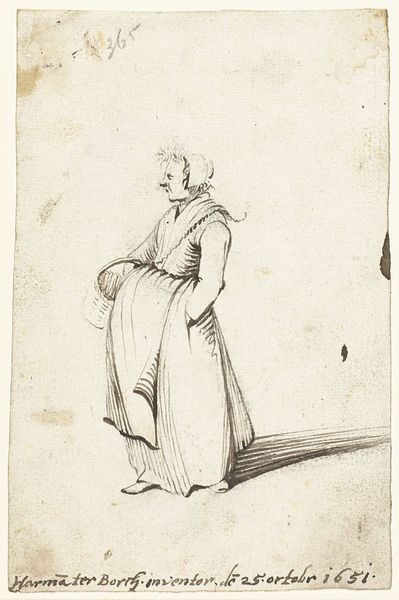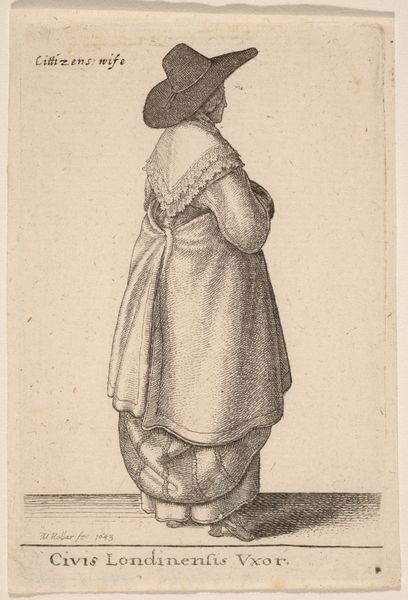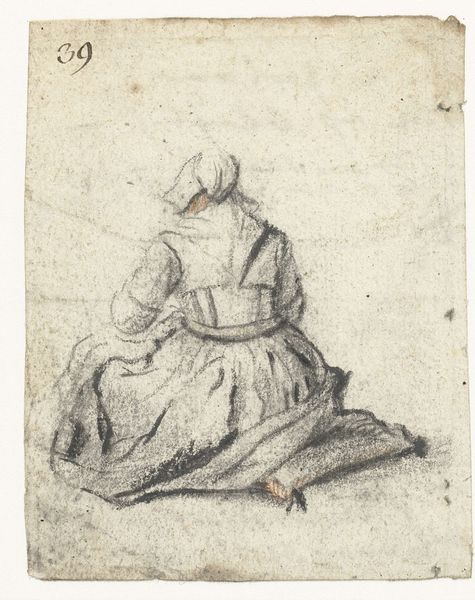
Vrouw met strohoed en eenden in haar rechterhand, van achteren Possibly 1652 - 1653
0:00
0:00
drawing, paper, ink, pencil
#
portrait
#
drawing
#
dutch-golden-age
#
figuration
#
paper
#
ink
#
pencil
#
genre-painting
Dimensions: height 96 mm, width 83 mm
Copyright: Rijks Museum: Open Domain
Curator: Let's discuss "Vrouw met strohoed en eenden in haar rechterhand, van achteren," which translates to "Woman with Straw Hat and Ducks in her Right Hand, from Behind." It's a drawing in ink, pencil and paint on paper by Harmen ter Borch, thought to have been created around 1652-1653. Editor: Ah, she seems to be walking into nowhere. Just stepping onto that thin little horizon line and POOF, she’s gone. A feeling of light but transient peace comes to mind. Curator: Ter Borch was a master of genre scenes and portraits during the Dutch Golden Age. We see that talent reflected here, even in a seemingly simple sketch. The composition is striking – her back is turned to us, and she’s caught in this in-between space. It raises questions about what she's leaving behind and where she is heading. Editor: Yes! And her straw hat, it reminds me of a halo somehow. Is she a departing angel? The ducks bundled in her hand add to this otherworldly, slightly bizarre feeling. They don't seem alive; she has probably already bought them ready to cook! A sombre acquisition. Curator: That is a very insightful observation. The ducks are a fascinating element; a symbol of domesticity or perhaps even sacrifice in Dutch Golden Age paintings. Her anonymity, the fact that we only see her from behind, creates distance but also an invitation to project. How does societal expectations play into the quiet drama of this common image? The fact that the image itself seems to be fading adds poignancy too; how do women fade from historical accounts? Editor: Fading... absolutely. Also, did she exist, or is she something imagined, captured fleetingly as something Ter Borch could relate to? She feels familiar. I bet Ter Borch met many women similar to her. This woman. I would like to know her story! It feels sad; even though light seems to strike her face under her hat brim, as she heads, happily or not, wherever her path leads. Curator: Exactly! I'm intrigued to note that these genre paintings during that era rarely showed women having any independence. I wonder if that is what it feels like we are witnessing... We are definitely witnessing that today, through our analysis. Thank you! Editor: Well, that was stimulating!
Comments
No comments
Be the first to comment and join the conversation on the ultimate creative platform.


